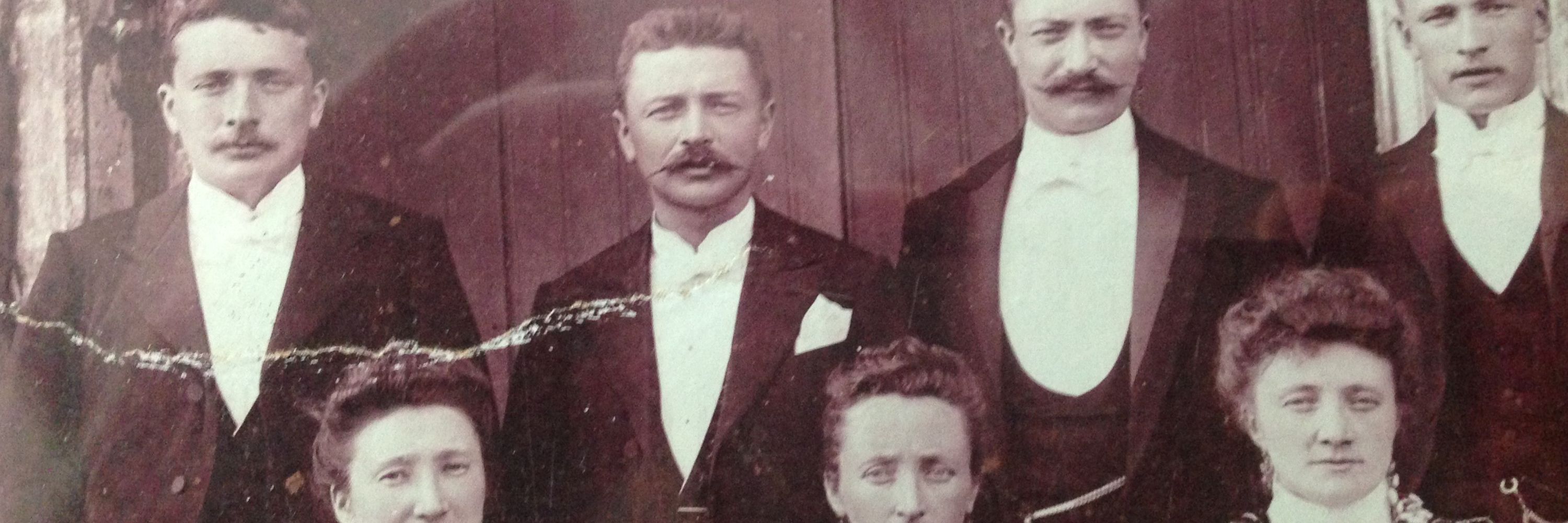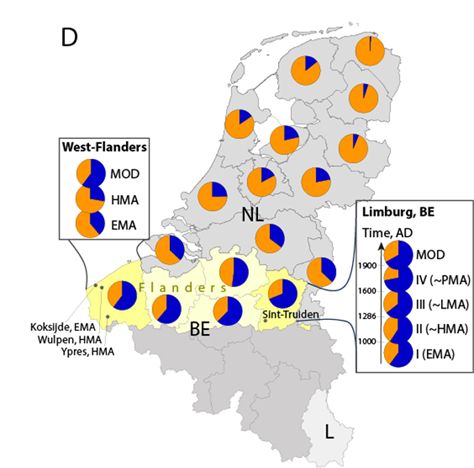
Maarten Larmuseau
@maartenlarmuseau.bsky.social
Professor in Genetic Genealogy @KU_Leuven
Biologist & geneticist inspired by genealogy, history, museums & art
Biologist & geneticist inspired by genealogy, history, museums & art
Yes, correct! OLV is the name of the church in Sint-Truiden. Best wishes
May 20, 2025 at 10:54 PM
Yes, correct! OLV is the name of the church in Sint-Truiden. Best wishes
Dankjewel Lieven!
May 20, 2025 at 7:57 PM
Dankjewel Lieven!
For all the details, read our paper: genomebiology.biomedcentral.com/articles/10....

Urbanization and genetic homogenization in the medieval Low Countries revealed through a ten-century paleogenomic study of the city of Sint-Truiden - Genome Biology
Background Processes shaping the formation of the present-day population structure in highly urbanized Northern Europe are still poorly understood. Gaps remain in our understanding of when and how cur...
genomebiology.biomedcentral.com
May 20, 2025 at 6:29 PM
For all the details, read our paper: genomebiology.biomedcentral.com/articles/10....
For the first time, we could reconstruct migration, family structure, urban development and epidemics in one medieval town in Flanders. (9/9)
Many congrats to Owyn Beneker, Toomas Kivisild, Christiana Scheib & all co-authors! Thanks to @fwovlaanderen.bsky.social and agentschap Onroerend erfgoed
Many congrats to Owyn Beneker, Toomas Kivisild, Christiana Scheib & all co-authors! Thanks to @fwovlaanderen.bsky.social and agentschap Onroerend erfgoed
May 20, 2025 at 6:29 PM
For the first time, we could reconstruct migration, family structure, urban development and epidemics in one medieval town in Flanders. (9/9)
Many congrats to Owyn Beneker, Toomas Kivisild, Christiana Scheib & all co-authors! Thanks to @fwovlaanderen.bsky.social and agentschap Onroerend erfgoed
Many congrats to Owyn Beneker, Toomas Kivisild, Christiana Scheib & all co-authors! Thanks to @fwovlaanderen.bsky.social and agentschap Onroerend erfgoed
We found few family ties among the 400 individuals—far fewer than in medieval Cambridge (UK). Only near the abbey, in the cemetery’s oldest part, were relatives more often buried together. Likely a reflection of social status. (8/9)

May 20, 2025 at 6:29 PM
We found few family ties among the 400 individuals—far fewer than in medieval Cambridge (UK). Only near the abbey, in the cemetery’s oldest part, were relatives more often buried together. Likely a reflection of social status. (8/9)
The plague left no significant impact on the population’s genetic makeup. We also found no evidence of lasting changes in immune gene diversity.
Other pathogens linked to poverty and poor hygiene were detected too, including Borrelia and Leptospira. (7/9)
Other pathogens linked to poverty and poor hygiene were detected too, including Borrelia and Leptospira. (7/9)

May 20, 2025 at 6:29 PM
The plague left no significant impact on the population’s genetic makeup. We also found no evidence of lasting changes in immune gene diversity.
Other pathogens linked to poverty and poor hygiene were detected too, including Borrelia and Leptospira. (7/9)
Other pathogens linked to poverty and poor hygiene were detected too, including Borrelia and Leptospira. (7/9)
For the first time, we found direct evidence of the plague in medieval Flanders: Yersinia pestis DNA in five individuals from the 14th century.
They were scattered across the cemetery—not in mass graves. No historical record from 14th-century Sint-Truiden mentions the plague at that time. (6/9)
They were scattered across the cemetery—not in mass graves. No historical record from 14th-century Sint-Truiden mentions the plague at that time. (6/9)

May 20, 2025 at 6:29 PM
For the first time, we found direct evidence of the plague in medieval Flanders: Yersinia pestis DNA in five individuals from the 14th century.
They were scattered across the cemetery—not in mass graves. No historical record from 14th-century Sint-Truiden mentions the plague at that time. (6/9)
They were scattered across the cemetery—not in mass graves. No historical record from 14th-century Sint-Truiden mentions the plague at that time. (6/9)
From the 11th century onward, the population became genetically more homogeneous—similar to today’s people from region. This was result of centuries of mixing between ‘Gallic’ (blue) & ‘Germanic’ (orange) ancestral groups, shaping north-south genetic gradient still visible in Low Countries. (5/9)

May 20, 2025 at 6:29 PM
From the 11th century onward, the population became genetically more homogeneous—similar to today’s people from region. This was result of centuries of mixing between ‘Gallic’ (blue) & ‘Germanic’ (orange) ancestral groups, shaping north-south genetic gradient still visible in Low Countries. (5/9)
The earliest inhabitants (8th–10th century) were remarkably genetically diverse (red on PCA). Differences between Flemish sites were then almost as large as those between present-day Flemish & Spanish populations. We even found 5 individuals with ancestry similar to medieval Irish or Scots. (4/9)

May 20, 2025 at 6:29 PM
The earliest inhabitants (8th–10th century) were remarkably genetically diverse (red on PCA). Differences between Flemish sites were then almost as large as those between present-day Flemish & Spanish populations. We even found 5 individuals with ancestry similar to medieval Irish or Scots. (4/9)
Teeth from 400 individuals were sampled as sterile as possible for ancient DNA. The result: a genetic timeline of a millennium, spread across the entire cemetery. (3/9)

May 20, 2025 at 6:29 PM
Teeth from 400 individuals were sampled as sterile as possible for ancient DNA. The result: a genetic timeline of a millennium, spread across the entire cemetery. (3/9)
In 2019, more than 3000 skeletons were excavated beneath the Groenmarkt in Sint-Truiden, the historic cemetery of the Church of Our Lady. For centuries, it lay also in the shadow of the influential abbey of Saint Trudo (†693). (2/9)

May 20, 2025 at 6:29 PM
In 2019, more than 3000 skeletons were excavated beneath the Groenmarkt in Sint-Truiden, the historic cemetery of the Church of Our Lady. For centuries, it lay also in the shadow of the influential abbey of Saint Trudo (†693). (2/9)
Ik heb de fouten laten weten! @vrtnws.bsky.social
January 22, 2025 at 3:59 PM
Ik heb de fouten laten weten! @vrtnws.bsky.social

